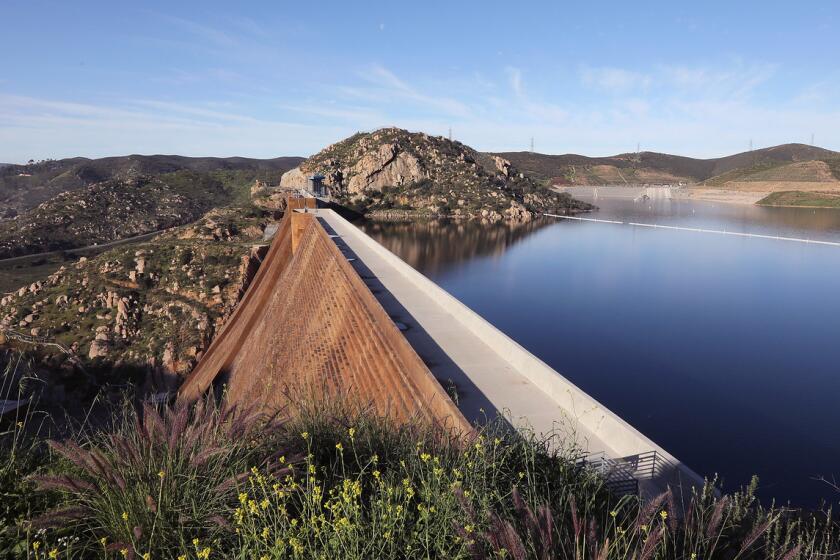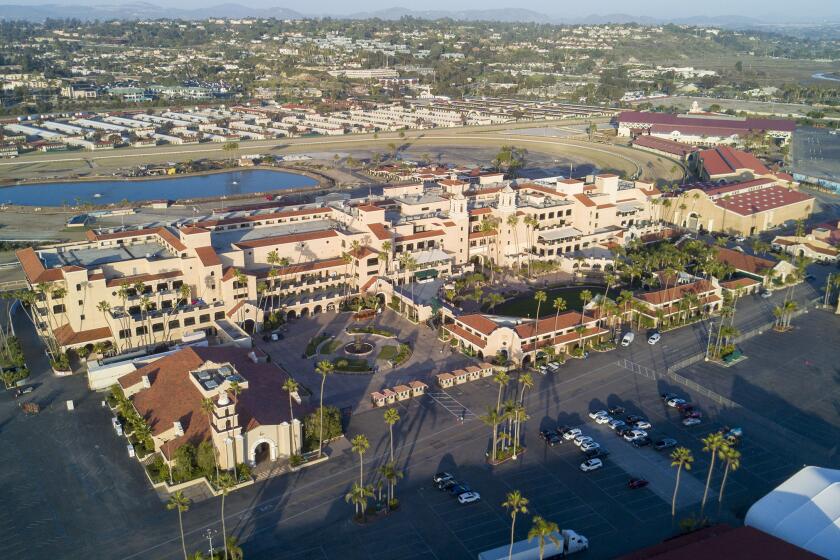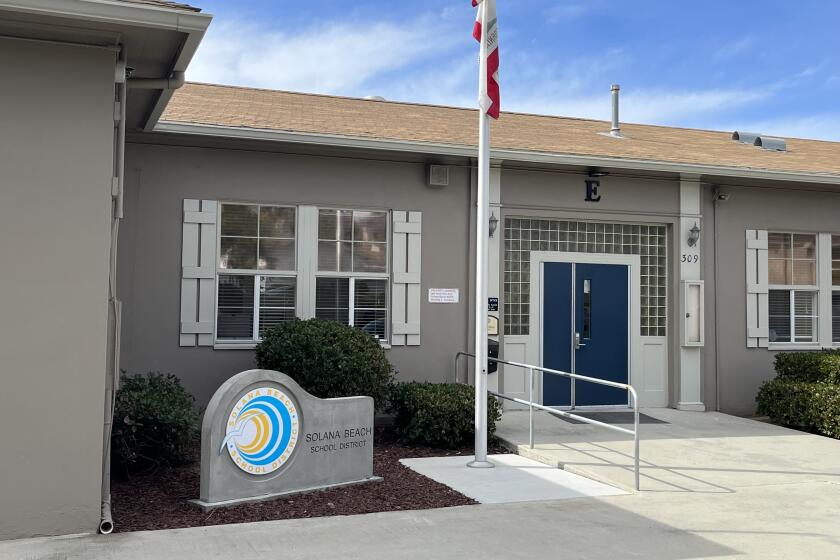Del Mar Heights team wins ‘Champions’ award at FIRST Lego League tournament
All nerves and frenetic energy, nearly 300 students gathered around the stage to hear the results from Day One of the FIRST Lego League’s San Diego regional tournament.
The eight 6th graders from Del Mar Heights Elementary School huddled together in their cactus-themed headgear — a nod to the research project they presented earlier in the day — hung on to the announcers’ every word. But for each award handed out, it was one of the 27 other teams erupting into jubilation.
Del Mar Heights’s two coaches — both with a son on the team — had tried to temper expectations heading into the competition, held at the Preuss School UCSD on Nov. 11 and 12. It was the Del Mar school’s first time competing, after all, and so many of the other teams were seasoned veterans of the Lego robotics circuit, a worldwide competition created to ignite a passion for STEM subjects.
Innumerable tweaks to their robot’s design and programming had managed to get reasonably consistent results on the practice table. But when crunch-time came, their contraption veered and erred off course, faltering on half of the 10 assigned tasks. For an unnerving stretch of the nine-hour extravaganza, Team Technobotic Dolphins hovered on the verge of elimination.
Having been passed by for the first four awards, there was little cause for hope as they awaited the final announcement: the Champions award, given to the team that best embodied the full range of FIRST Lego League’s objectives — from performance of their Lego-based automaton, to the quality of their research, to the teamwork and composure demonstrated while solving problems.
Even several days later, the bedlam of that announcement, said team member Will Zimmer, was still a blur.
“All I heard was ‘easily recognizable by the plants growing out of their heads,’ and then everybody jumped up and screamed ‘Yeah!’” he said. “We were already running to the stage by the time they said Team Technobotic Dolphins.”
And with that, the plucky group of first-timers are on their way to the Southern California finals at Legoland on Dec. 2 and 3.
The reason for that unlikeliest of outcomes: their middling scores in the robotics portion were more than made up for in the competition’s two other categories — their answer to the research question posed to all teams in September, and the manner in which they represented FIRST Lego League’s “core values” including collaboration, sportsmanship and a drive to share their experiences.
There is, of course, plenty to fine-tune over the next two weeks, starting with many an after-school session to redesign — and re-redesign — their robot. They’ll also redouble their efforts to express those core values and make sure all eight members take full ownership over every aspect of the competition.
But as thrilled as they are for Legoland, the two months they’ve spent brainstorming, researching and tackling problems together have set their aspirations far beyond whatever chance they have of advancing to the national championship in Houston.
“One of the most important core values,” said team member Grant Smith, “is that what we discover is more important than what we win.”
For Team Technobotic Dolphins, that means taking their system for improving the urban water cycle to the next level — turning the rudimentary mockup they built for the competition into a real-world solution as applicable to water-starved communities anywhere in the world as it is to the manicured backyards of Del Mar the team had in mind when they first set out.
Their design — a bio-filtration unit that uses the roots of cacti, ferns and bulrush to purify rainwater —came after immersing themselves in all things hydrodynamic, including trips to the San Diego Water Authority and the desalination plant in Carlsbad.
Their passion for bio-filtration shone through as team members gave this newspaper a sneak peek a few days before the competition.
In their design, rainwater from a collection tank is pumped through a gauge-controlled pipe into the load tank, where the plants’ roots work their natural magic, straining out contaminants, fine sediments and even some toxins. The output of “purple pipe”-quality water is suitable for irrigation, a self-sustaining way to re-vegetate denuded spaces while reaping a liquid payoff at the same time. And the units can be linked up end to end, allowing the design to scale up or down to nearly any size.
“It’s helping the environment and giving you water,” said team member Orion Singha. “So it’s a net benefit for all.”
Fresh off their competitive triumph, a trio of team members pitched their bio-filtration system to the City of Del Mar’s environmental sustainability special projects manager in hopes of getting their design into the landscape plan for the $18 million city hall and civic center set to open next summer.
Armed with a slew of questions and feedback from that meeting, the Technobotic Dolphins will now work out the cold, hard math of yield, costs, maintenance and scalability. Dan Biggs, a civil engineer who has provided much-needed mentorship, will help the team compose the contract-quality proposal that just might land their bio-filtration units alongside the array of features that will make the new city hall sustainable for decades to come.
“That would be pretty cool,” Will said. “Everybody wants to be a part of building that. It’s going to be the crown jewel of the city.”
Get the Del Mar Times in your inbox
Top stories from Carmel Valley, Del Mar and Solana Beach every Friday for free.
You may occasionally receive promotional content from the Del Mar Times.





